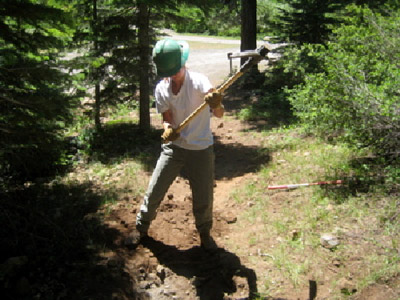As a voice of my generation, post-college employment no longer seems to be simply defined as 9 to 5 in a cube. Many of my fellow Gen Y’ers are taking an alternative route, veering away from the wrath of the “real world” – a route that makes a difference in people’s lives while providing lifelong skills and and meeting critical demands in the community. With the 1.6 million increase of Americans volunteering in the past year, a total of 63.4 million volunteers are now demonstrating the generosity of America’s spirit at its finest. And a lot of these new volunteers are my peers.
Thanks to the biggest national community service corporation in the country, AmeriCorps, college grads are actively incorporating service into their jobs and lives for at least one year. As a U.S. federal government program, AmeriCorps provides services ranging from public education to environmental restoration. It offers 75,000 opportunities to serve through an association of partnerships with local and national nonprofit groups.
So, what happens when a twenty-something, idealistic do-gooder meets food? Do they buy from a big grocery chain without thinking of the food’s industrial journey to the store? Or do they buy from their local markets, feeling connected to their local roots, literally? The food industry is on the edge of tapping into a new marketing frontier: College grads that promote local service and want their food choices to match.
Many of these young volunteers strive to eat with the same good conscience as they use on the job. However, they work on a tight budget. Organic groceries are too expensive, so what about serving communities not only by helping, but by eating locally? The Northwest Service Academy is one of the largest AmeriCorps programs in the nation. Their mission is to address local environmental demands while “promoting a cultural and civic responsibility.” This group not only buys their fresh produce and meats locally, benefiting the surrounding areas, but teaches the volunteers about food production, food buying, food preparation, and waste food disposal.
For five days I volunteered with an AmeriCorps crew of the Northwest Service Academy. I trekked along the Pacific Crest Trail restoring hazardous hiking routes and living as simply as possible. Surprisingly, much of my work that week linked back to food. We cooked everything from scratch and composted as much of our scraps as possible. The crew only eats seasonal produce and buys local meats and eggs from local farmers. Many of the volunteers told me they have never eaten so healthily or so eco-friendly in their lives. This was their first step to live a health conscious lifestyle outside the fast foods of college. This new marketing frontier is beginning to face a generation of humanitarians who want to “get to know their food” without spending an arm and a leg.

Because I’ve had the opportunity to intern with a company that works with and for the fresh produce industry, I understand now that “getting to know our food” doesn’t and can’t always mean getting it from local sources. This can also mean that, when the winter months arrive and locally grown fruits and vegetables are harder to find; we have the tools to make educated decisions about what’s available and at peak of season so that we’re always making the freshest possible decisions.
So What?: My charitable generation is not only going the “service” route, we are also rediscovering the food market of fresh, local products. Food marketers are on the verge of facing a new consumer group that may shift their marketing strategies and tactics forever. By marketing effectively to our generation/demographic, we will keep eating fresh and locally grown produce when it’s available, AND be educated about the origins of fresh produce and how that incorporates into our local/humanitarian stories.
Posted by: Katy Billups, The Intern












